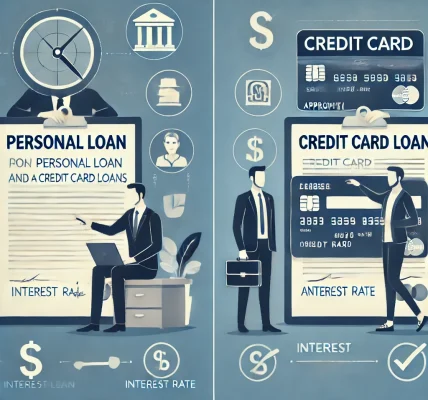Forex trading has gained immense popularity as an investment avenue, attracting traders worldwide. Choosing the right forex trading platform is crucial for executing trades efficiently, accessing advanced tools, and ensuring secure transactions. In this article, we provide an in-depth analysis of the top forex trading platforms, their features, advantages, and how to select the best one for your trading needs.
What to Look for in a Forex Trading Platform?
Before diving into the top forex trading platforms, it’s essential to understand the key features that define a reliable platform:
- Regulation & Security: Ensure the platform is regulated by a reputable financial authority (e.g., FCA, CySEC, CFTC).
- User-Friendly Interface: A smooth and intuitive interface is crucial for both beginners and experienced traders.
- Trading Tools & Analysis: Access to real-time charts, indicators, and market analysis enhances trading decisions.
- Spreads & Fees: Lower spreads and transparent fees contribute to better profitability.
- Execution Speed: Fast trade execution prevents slippage and enhances trading efficiency.
- Customer Support: Reliable 24/7 support can be vital in resolving trading issues.
- Deposit & Withdrawal Options: Easy funding and withdrawal methods add convenience.
Top Forex Trading Platforms in 2025
1. MetaTrader 4 (MT4)
- Best for: Beginners and experienced traders
- Key Features:
- Advanced charting tools and indicators
- Expert Advisors (EAs) for automated trading
- Secure and stable trading environment
- Pros: Widely used, customizable, supports multiple brokers
- Cons: Outdated UI compared to newer platforms
2. MetaTrader 5 (MT5)
- Best for: Traders looking for advanced features
- Key Features:
- More timeframes and indicators than MT4
- Integrated fundamental analysis tools
- Supports stock and commodity trading
- Pros: Faster execution, improved UI, and diverse asset trading
- Cons: Limited broker support compared to MT4
3. cTrader
- Best for: Professional and algorithmic traders
- Key Features:
- ECN trading with direct market access
- Advanced charting and depth of market (DOM)
- Cloud-based trading support
- Pros: Transparent pricing, fast execution, superior charting tools
- Cons: Limited brokers support compared to MT4/MT5
4. NinjaTrader
- Best for: Technical traders and futures traders
- Key Features:
- Advanced market analytics
- Custom script development for automated trading
- Supports forex and futures trading
- Pros: Excellent backtesting tools, comprehensive features for day traders
- Cons: Requires a license for full features
5. TradingView
- Best for: Traders who focus on technical analysis
- Key Features:
- Web-based with a clean interface
- Social trading and shared trading strategies
- Hundreds of indicators and drawing tools
- Pros: Best charting software, great for multi-asset trading
- Cons: No direct trading execution, requires broker integration
6. Thinkorswim by TD Ameritrade
- Best for: U.S. traders who want a comprehensive trading suite
- Key Features:
- Professional-grade charting tools
- Paper trading for strategy testing
- Integrated news and research
- Pros: Great educational resources, ideal for long-term traders
- Cons: Limited availability outside the U.S.
How to Choose the Best Forex Trading Platform?
1. Identify Your Trading Style
- Scalpers & Day Traders: Need fast execution and low spreads (e.g., cTrader, NinjaTrader)
- Swing Traders: Require strong charting tools (e.g., TradingView, MT5)
- Algorithmic Traders: Need automation support (e.g., MT4, NinjaTrader)
2. Consider the Cost & Fees
- Some platforms offer commission-free trading, while others charge per trade.
- Compare spreads, commissions, and overnight fees before choosing.
3. Regulation & Broker Support
- Choose a platform supported by a well-regulated broker.
- Ensure the platform has a strong security framework to protect your funds.
4. Test with a Demo Account
- Most platforms offer a free demo to practice trading strategies.
- Evaluate the ease of order execution, charting tools, and available features.
Common Mistakes to Avoid When Choosing a Forex Trading Platform
1. Ignoring Regulation
Using an unregulated platform can expose traders to fraud and fund mismanagement.
2. Overlooking Trading Costs
Hidden fees can eat into profits; always review spreads, commissions, and transaction charges.
3. Choosing Complexity Over Simplicity
Beginners should opt for user-friendly platforms like MT4 rather than overly complex software.
4. Not Checking Asset Availability
Some platforms only support forex, while others allow trading in stocks, commodities, and cryptocurrencies.
Frequently Asked Questions (FAQs)
1. Which forex trading platform is best for beginners?
MetaTrader 4 (MT4) is the most beginner-friendly, offering an intuitive interface and extensive educational resources.
2. Can I use multiple forex trading platforms?
Yes, traders can use different platforms for different strategies. For instance, TradingView for charting and MT4 for execution.
3. What is the safest forex trading platform?
Regulated platforms like MetaTrader, Thinkorswim, and cTrader are among the safest, as they follow strict financial regulations.
4. Are there free forex trading platforms?
Yes! Most platforms like MT4, MT5, and TradingView offer free basic versions, though some features may require a subscription.
5. Can I trade forex on my mobile device?
Yes, most platforms offer mobile apps with full trading functionalities.
Conclusion
Selecting the right forex trading platform is a crucial step in a trader’s journey. Whether you’re a beginner looking for a user-friendly interface or an experienced trader needing advanced tools, there’s a platform for you. Always prioritize security, cost-effectiveness, and ease of use when making your choice. Happy trading!




